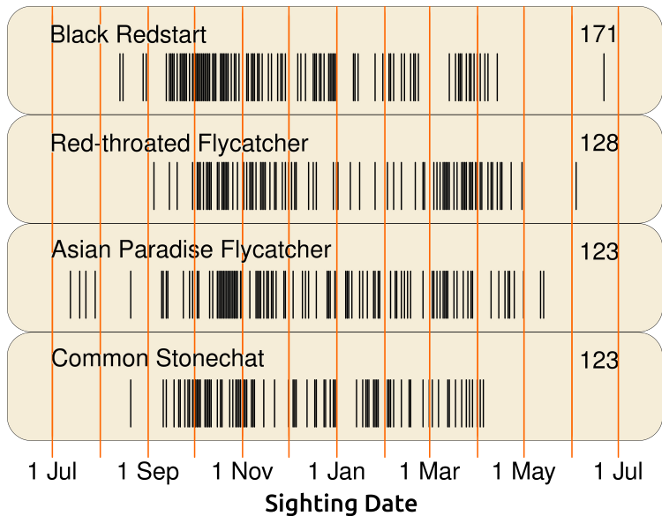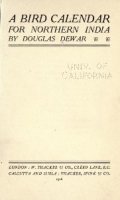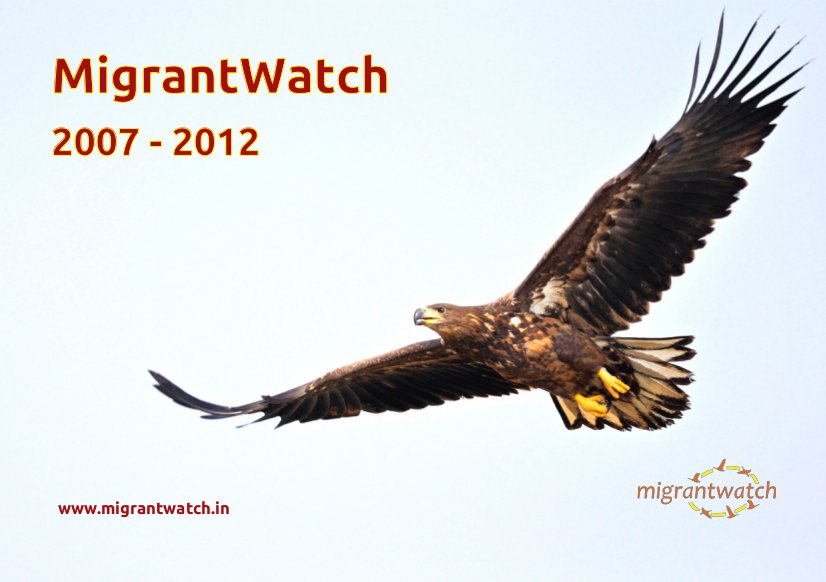By Dr Jayan Thomas
Dr Jayan Thomas is an ophthalmologist by profession; but early in the morning and on Sundays, he is an inquisitive birdwatcher and photographer. Watching a Blue-tailed Bee-eater catch its prey and smash it against a wire before swallowing the bee sparked his curiosity about birds and their behaviour. He lives in Cannanore, Kerala, near the ocean and is President of the Cannanore Ophthalmological Society.
It was Sunday the 30th of October 2011, and myself and Mr. PC Rajeevan had decided to go to a place called Ezhome about 23 Km from Cannanore (Kannur), on the coast of northern Kerala. I woke up at 5 AM and started my journey to Ezhome by 5.30 AM. Rajeevan was at Ezhome waiting for me and after a cup of hot roadside café tea we were on to a slow birding walk, with binos, camera and an umbrella, as it was drizzling. The first bird to be seen was a Purple Heron, then a Blue-tailed Bee-eater and so on. After 2 hours of birding we counted about 40 species and were about to call it a day, when we decided instead to first go to Madaipara, since it is close to Ezhome. We reached Madaipara just before noon, and so bird activity was very low. Suddenly Mr. Rajeevan spotted a group of birds across the road and we went to check them out. There were about 200 Lesser Sand Plovers feeding on a burned patch of grass, and some bathing in rock pools.  Among these Lesser Sand Plovers was a smaller and slimmer bird with yellow legs and pearly edged wings. What could this be? We were intrigued.
Among these Lesser Sand Plovers was a smaller and slimmer bird with yellow legs and pearly edged wings. What could this be? We were intrigued.
With caution we approached the bird and found to our surprise that it was quite unusual. Since the bird was feeding and walking around we had ample time to take some decent photos. During flight the upper parts appeared uniform, with no prominent wing pattern. Driving back home we discussed the possibilities of a new species being sighted in Kerala.
 We whittled down our “differential diagnosis” of the bird to three species:
We whittled down our “differential diagnosis” of the bird to three species:
1. Buff-breasted Sandpiper.
2. Long-toed Stint
3. Reeve (Female Ruff)
Long-toed Stint is almost similar to this new bird, but the stint has prominent facial markings. Reeve was a possibility, but this new bird did not have a post-ocular stripe. A post-ocular stripe is essential for the bird to have been a Reeve. Moreover this bird was substantially smaller in size than a Reeve. (For a visual estimate of size see the photos below, which have this bird together with Lesser Sand Plovers.)

Now the only other possibility was the Buff-breasted Sandpiper, a New World bird. Yes, this bird looked like the Buff-breasted Sandpiper in size and all other features. This bird was about 19 cm with a plain face, an eye-ring , streaked crown and yellow legs.  The picture of the bird was sent all around the world by MigrantWatch and others. We are thankful to Praveen J., Sashikumar, Aasheesh Pittie, Bill Harvey, Rex De-Silva and Krys Kazmierczak for having identified the bird as the Buff-breasted Sandpiper.
The picture of the bird was sent all around the world by MigrantWatch and others. We are thankful to Praveen J., Sashikumar, Aasheesh Pittie, Bill Harvey, Rex De-Silva and Krys Kazmierczak for having identified the bird as the Buff-breasted Sandpiper.
Buff-breasted Sandpiper (Tryngites subruficollis) breeds in the Arctic tundra of North America and is a long distance migrant to South America, mainly Argentina. The Canadian wildlife service estimates that there are only about 15,000 birds in the world and hence it is classified as Near Threatened by the IUCN Red List. This bird which came to Madaipara could have been lost: instead of going to Argentina, this bird might have been wind-blown from the Great Plains Flyway of North America and landed up in India. Our sighting appears to be only the third of this species from South Asia.
Madaipara is a laterite flat hillock near the Ezhimala Naval Academy. On one side of Madaipara is the Arabian sea and the other side a mountain range of seven small hills (Ezhimala in Malayalam means seven hills). Sandwiched between the sea and the seven hills is a long meandering river. Madaipara is basically a flat land with few trees and shrubs and a lot of weeds. The vegetation is sometimes set on fire, and these spots are ideal for birds which come in search of insects. There are occasional rock puddles too on the hillock up to Spring. The Buff-breasted Sandpiper was seen here for 4 days. Of these, I sighted it on two different days and my birding pal Rajeevan sighted it on all 4 days.
Finding a rare bird like this is one of the dreams of the serious birder. Locating and identifying a species that is least expected is a great challenge and great thrill. You have to be ruthlessly honest with yourself for this. Reporting a rare bird carries a lot of responsibility. It becomes part of science. If you believe that you have seen a rare bird, study it carefully, take photos, video if possible and note the circumstances of the sighting. Then as soon as possible alert other birders.
You can see Dr Jayan Thomas’s MigrantWatch sightings and photos here.
More about the Buff-breasted Sandpiper from Wikipedia and from the Cornell Lab of Ornithology.







 Among these Lesser Sand Plovers was a smaller and slimmer bird with yellow legs and pearly edged wings. What could this be? We were intrigued.
Among these Lesser Sand Plovers was a smaller and slimmer bird with yellow legs and pearly edged wings. What could this be? We were intrigued. We whittled down our “differential diagnosis” of the bird to three species:
We whittled down our “differential diagnosis” of the bird to three species:
 The picture of the bird was sent all around the world by MigrantWatch and others. We are thankful to Praveen J., Sashikumar, Aasheesh Pittie, Bill Harvey, Rex De-Silva and Krys Kazmierczak for having identified the bird as the Buff-breasted Sandpiper.
The picture of the bird was sent all around the world by MigrantWatch and others. We are thankful to Praveen J., Sashikumar, Aasheesh Pittie, Bill Harvey, Rex De-Silva and Krys Kazmierczak for having identified the bird as the Buff-breasted Sandpiper.